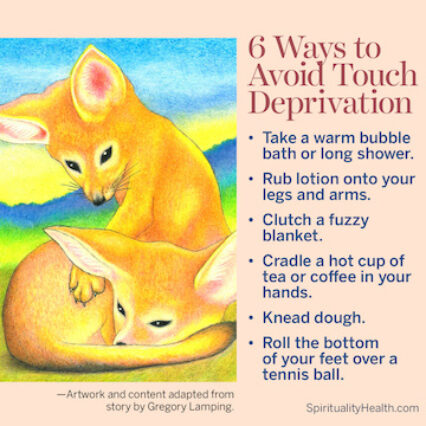Befriending the Vagus Nerve
Resources to Calm Down Quickly
Getty/Grandfailure
Explore the most accessible ways to achieve natural vagus nerve stimulation.
These days, you don’t have to look far to find a reason to feel stressed. The levels of stress most people are facing are well beyond what anyone could have imagined pre-COVID. Relentless, unmitigated stress can hijack the nervous system and leave you in a perpetually heightened emotional state, which can result in a host of health issues: inflammation, digestive problems, anxiety, and depression, to name a few.
Unlike in the early days of your nervous system’s evolution, your reaction to stress is likely not adaptive. You are not more likely to survive if you ramp into “fight, flight, or freeze” mode with every news story or political pundit’s rant, (let’s not even bring Facebook into the equation.) Rather, you must begin to filter what you take in and learn to mitigate your own stress response. These days, that also means bringing the parasympathetic branch, or “rest and digest” response into a more active part of the equation.
Your ability to heal your body, to experience ease, and sleep deeply depends on your capacity to manage the levels of stress that exist in your life. Generally speaking, you can support healthy function with natural vagus nerve stimulation.
[Read: “Calm Down: 3 Ways to Activate Your Vagus Nerve.”]
For those suffering from prolonged vagus nerve dysfunction, you will want to visit a functional or integrative health care practitioner who can offer a comprehensive support plan for getting your vagus nerve back in top shape.
Cultivate Kindness
Learn how to bring more kindness and compassion for yourself and others into your life with “3 Steps to a Kinder Mind.”
Choose any of these techniques for natural vagus nerve stimulation: “6 Ways Improving One Nerve can Change Your Health.”
Along with the “fight or flight” response we experience from stress, there is the less commonly talked about “tend and befriend” response. Explore Kelly McGonigal’s work on positive responses to stress: “Stress and the Compassionate Heart.”
Touch and Connection
Living through a pandemic, with “Safer at home” slogans, social distancing rules, and mandatory shelter in place orders, your natural need to hold and be held may have been seriously curtailed. There’s a reason babies calm down when they are tightly swaddled, or when someone is crying and you want to reach out and hug them: it’s in our biological wiring.
Josh Korda, dharma teacher at Dharma Punx NYC, blends psychoanalytic theory with Buddhist dharma. He describes the nervous system as being a “bottom up” system that starts in the primal part of the brain. Because of this tendency, according to Korda, “you can’t just tell yourself that you are safe; you have to prove it.” Proving it means that you access the mind through sensations of the body.
Pet adoption and foster rates have risen dramatically since the pandemic began. Take in psychiatric nurse Gregory Lamping’s thoughts on “How Pets Alleviate Touch Deprivation.”
If skin hunger and touch starvation are terms that are new to you, but make you nostalgic for friendly hugs, high fives, and pats on the back, read, “6 Techniques to Overcome Touch Starvation.”
Vocalizing
Humming, chanting, and singing are all powerful ways to stimulate the vagus nerve. The vibration in your throat from vocalizing creates a physical connection, and induces a calmer state. Even if you prefer the more intimate venues of the shower or your car to let your voice be heard, (Read: “The Power of Fierce Singing.”) you will still be bringing you parasympathetic nervous system into action.
Singing with a group has even more benefits. You can sing in a group from the comfort of your own home. Check out Sing Your Heart Out and read about why singing just for fun has powerful implications in “The Healing Powers of Singing.”
Breath
Breathing is arguably the most basic act we engage in without giving it a second thought. It is also generally considered one of the most powerful tools in the arena of natural vagus nerve stimulation. The basic premise is simple: spend time every day belly breathing and throughout the day, and make a point to ensure that your exhale is longer than your inhale. Both of those simple exercises are directly correlated with vagus nerve stimulation.
Want to calm down, have more focus, or sleep deeply? There’s a breath for that. Read: “Five Kinds of Breath Everyone Should Take.”
Ram Dass kindly and humorously answers the question, “What is the Power of the Breath?”
In his 2020 New York Times bestseller Breath: The New Science of a Lost Art, journalist James Nestor takes a deep dive into all aspects of breathing, noting that across cultures and around the globe, prayers and spiritual practices create a remarkably similar pattern of breathing that results in a sense of relaxed calm. [Read: “Breath as Prayer.”]
Still stressed? Read “23 Ways to Destress in 5 Minutes or less” or settle in and listen to Julie Peter’s calming voice in the “Guided Meditation: Body as Home.”
May you find calm and peace in this moment.



